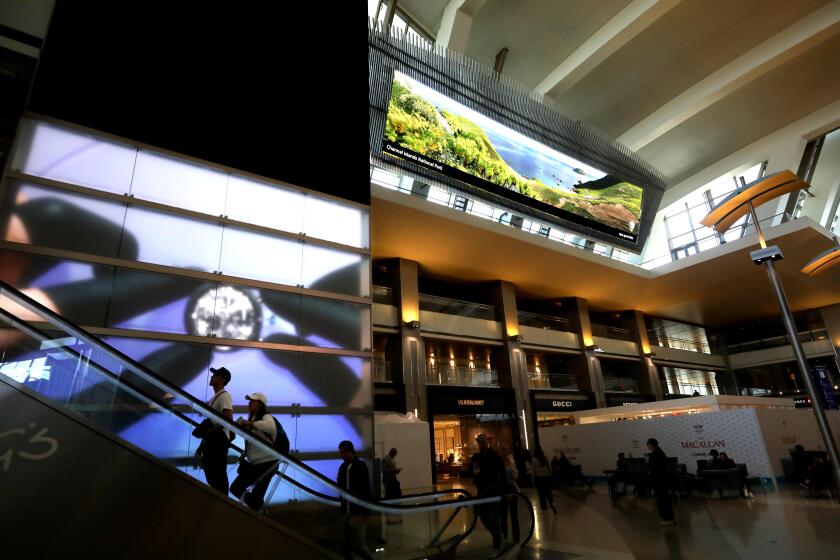The trek from your plane to LAX’s ride-share lot can be a nightmare. Will it be fixed?
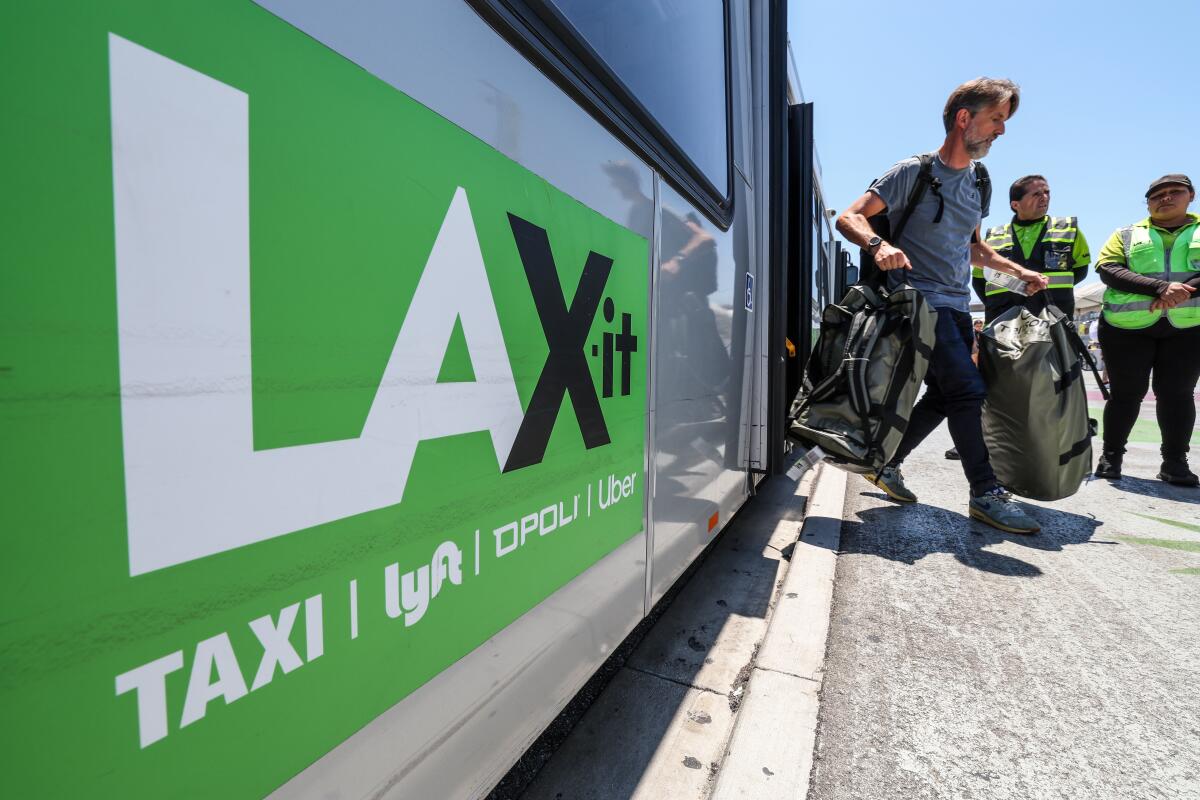
- Share via
Thu Fiyth landed at Los Angeles International Airport from Paris to celebrate his 34th wedding anniversary. If only his family could begin their vacation.
After getting their bags, the group spent more than 20 minutes trying to figure out how to hail a taxi, looking right and left for a clear sign. They asked several people, including an airport worker, but no one clarified to them that there were several shuttle stops marked by neon green markers that would take them to the taxi and ride-hail lot.
They ultimately opted to make the journey on foot, after a Times reporter provided directions. The walking route directs travelers along the path that hugs the airport terminals, rather than the disjointed sidewalk spaces closer to the parking garages. But nearby construction sites, adjacent lanes of traffic and the occasional wait at crosswalks can cause confusion.
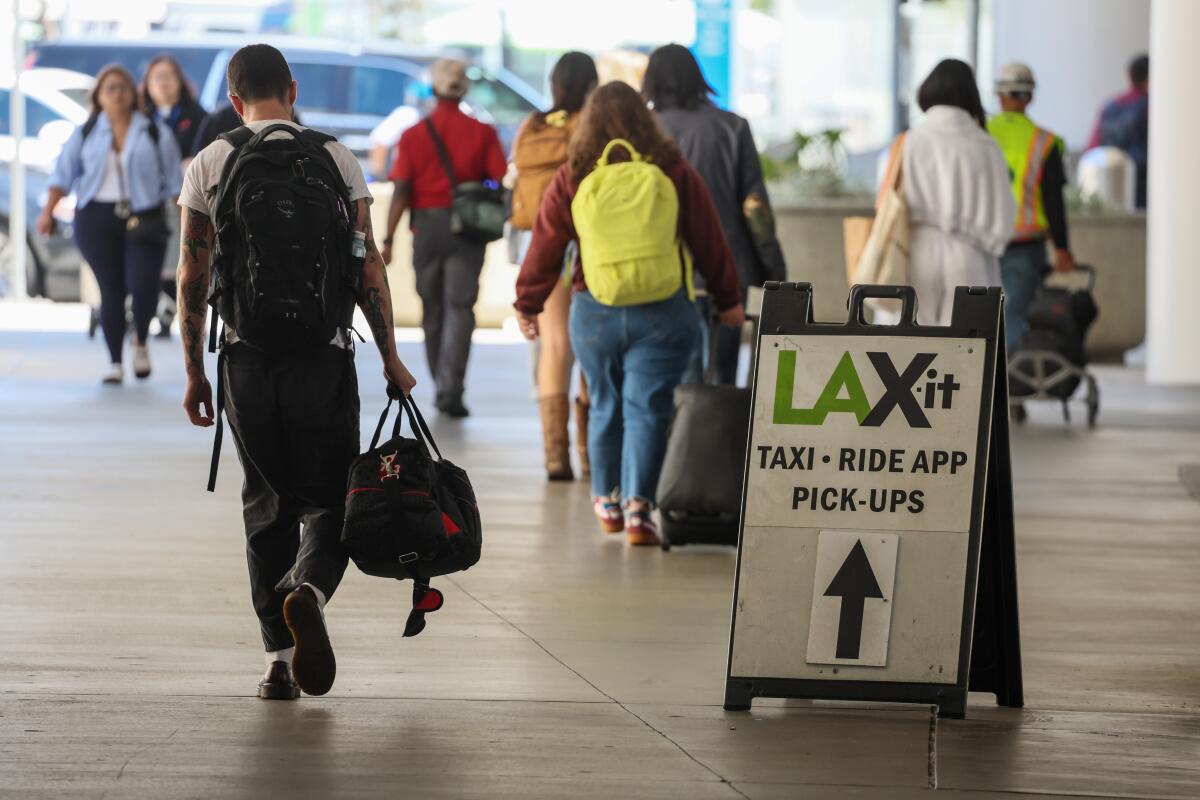
“We’ve been walking 10 minutes now to find a taxi. In a city like Los Angeles? That doesn’t sound right,” said Fiyth, 67.
The opening of the LAX-it ride-hail lot in 2019 caused a frenzy in Los Angeles as travelers tried to navigate a clunky system that added a leg to their journey they certainly didn’t ask for: a shuttle ride to catch an Uber, Lyft or taxi, replacing the old way of simply hailing them right outside the terminal. LAX officials said it was needed to offload traffic in its infamously gridlocked horseshoe loop. Nearly five years later, travelers have continued to bemoan LAX-it — even if there are signals that relief might come in 2026.
A $30-billion overhaul promises to make the experience better for travelers ahead of the 2028 Olympics and the airport’s centennial. Until then, travelers continue to endure chaos.
LAX-it was billed as a temporary ride-hail zone. The space took over from a former Park ’n’ Fly parking lot and opened after Lyft and Uber entered the vicinity and construction began on the Automated People Mover train.
The plan was always for the lot to relocate to a stop along the People Mover line once that was completed. But after significant delays pushed back the targeted 2023 opening date by several years, the lot-and-shuttle system has remained in place.
The airport’s board of commissioners recently approved $400 million more to settle past claims between the airport and the People Mover contractor over timeline and production disputes, putting the 2.25-mile elevated train on track for a January 2026 opening date. Aligned with that opening, the airport’s plan is to create a new area designated for pickups by taxis, Ubers and Lyfts, likely near the airport’s economy car parking lot. The train is supposed to be able to pick up travelers every two minutes and deliver them to the new lot in less than 10 minutes.
An alternative dropoff and pickup location also is expected to be added near the upcoming LAX/Metro transit station, offering another option to get in and out of the airport. That location also will be accessible by the elevated People Mover train. Transit experts believe this could significantly reduce traffic inside the horseshoe loop.
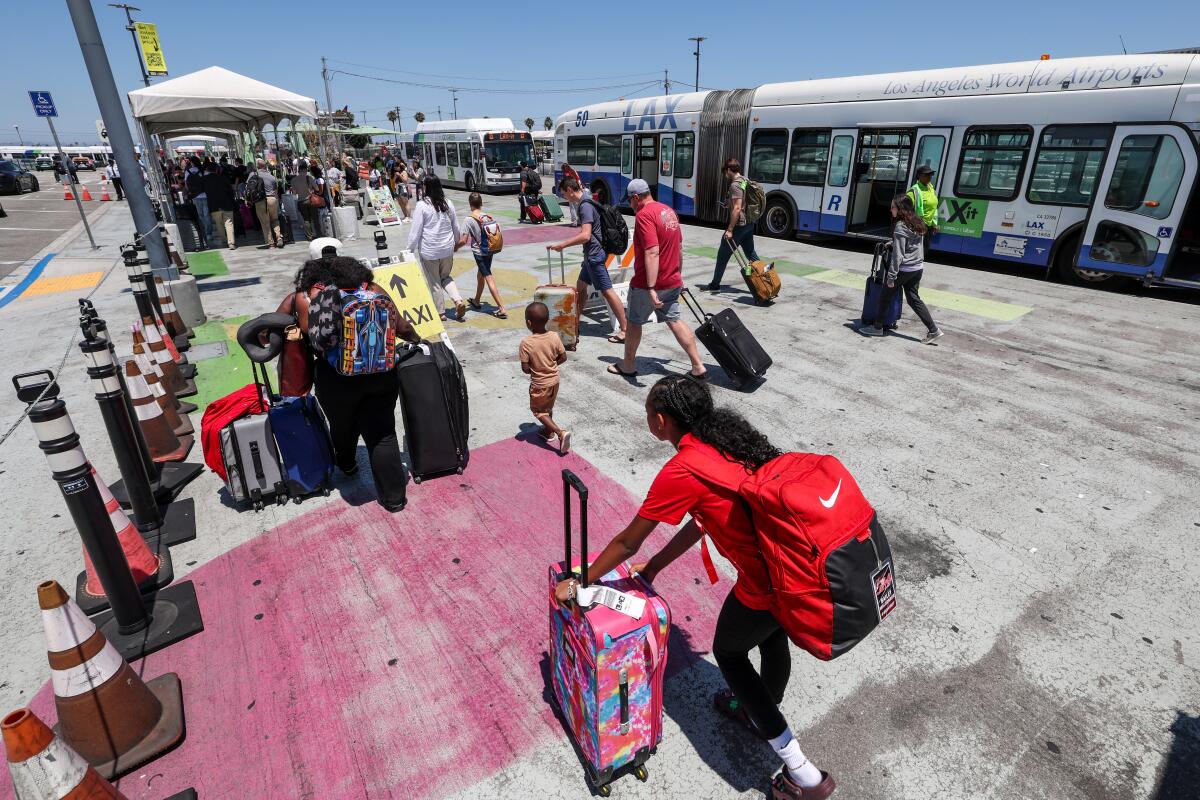
But for now, attempts to find a ride can be a less than seamless experience. That’s especially true for those who aren’t familiar with LAX and for travelers who arrive at the airport with multiple pieces of luggage, many of whom would have just landed from a lengthy international flight. Their options are to either carry multiple suitcases and boxes or precariously balance them atop a cart while they walk to the ride-hail lot, or load their baggage onto a shuttle often already crowded with people, luggage and strollers.
The experience also is shaped by where a person exits the airport. From Terminal 1, for example, the walk is a short, straight shot to the lot that can take roughly five minutes. From Terminal 7, a sidewalk path crosses the horseshoe to link travelers to Terminal 1 — but that shortcut along parking garages isn’t easy to spot.
At the Tom Bradley International Terminal, the midpoint of the two-mile horeshoe loop, the walk can take more than 20 minutes and the shuttle ride can take more than 10 — longer at times when traffic is high. Walkers wheeling luggage must navigate fellow travelers darting in and out of Terminals 3, 2 and 1, which can be daunting during peak travel times on the weekends and in areas where the sidewalk narrows.
To top it off, it’s not always clear when a traveler should hail their ride on their phones — if they’re too far away, the request won’t go through. But doing it once at the lot can add more of a delay.
One woman visiting from Pakistan said that she and her husband tried to find the shuttle to the ride-hail lot but eventually gave up and walked with their 3- and 5-year-old girls, two strollers and four large bags. In the confusion, just as their taxi pulled up, they realized that they’d forgotten the car seat at the baggage claim area.
“We couldn’t figure out where the green [LAX-it] signs were taking us and how to get on the shuttle,” said Maryan Abid, 38.
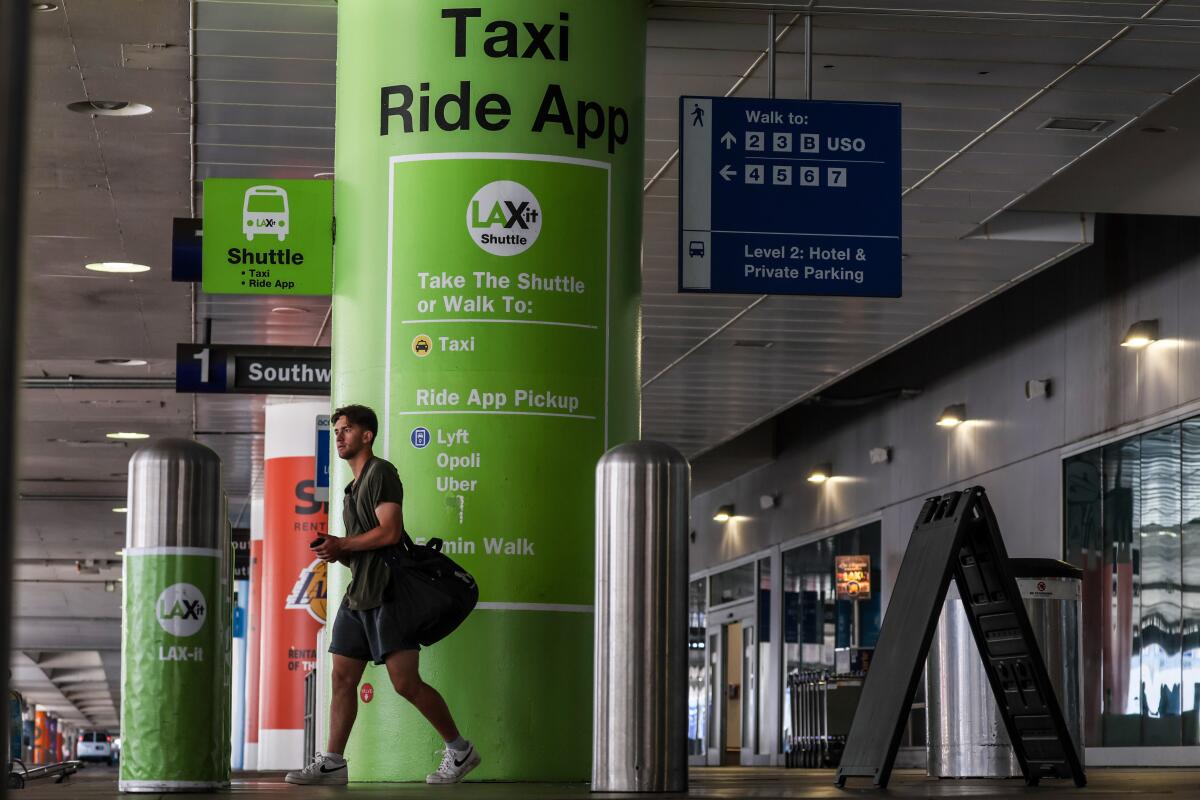
Many travelers avoid LAX-it altogether by relying on shuttles to outside parking lots or pickups from friends and family. And some prefer to take Lyft Black or Uber Black, the services’ pricier alternatives that are allowed to pick up curbside. But a large portion of travelers continue to rely on the ride-hail lot. Roughly 575 shuttle trips transported about 13,350 passengers each day in June.
Those shuttles are often packed. Occasionally, unoccupied disability seating areas will be loaded with bags that have no barrier to prevent them from rolling into standing passengers. And on especially busy travel days, such as earlier in July when a global software outage canceled flights around the world, lines form just to get on the shuttle and travelers, especially those with luggage, have to wait for subsequent buses.
A family visiting from the Netherlands patiently loaded multiple bags onto a shuttle bus.
“You load them one by one, and you pray [that they all fit],” Emma B., 15, said, amused at how difficult the process was.
A pair of friends visiting from El Salvador had about 10 large bags that they also loaded onto the shuttle.
“It’s too much trouble,” Marvin Pineda, 42, said, shaking his head.
Some major airports have similar setups that require travelers to move to a new location to get a ride. At San Francisco International Airport, travelers must go to level 5 of a parking garage to order a ride; at Hartsfield-Jackson Atlanta International Airport, travelers must similarly follow orange signs to their designated zones. Elsewhere, some smaller airports, such as John Wayne Airport in Orange County, offer multiple areas to pick up ride-hail services that correspond to each terminal.
Travelers at LAX have pointed to a lack of clear signage as one of the biggest obstacles when it comes to locating the LAX-it lot and shuttle. Neon pink signs outside terminals include information on how to get to various parking lots but don’t clearly indicate that the shuttle stops are marked by a different color, neon green.
The airport is undergoing a $30-billion overhaul ahead of the 2028 Olympics to improve terminals and update the airport signage in the hopes of fixing travelers’ experiences. But some remain skeptical that more changes at the airport will help people get around better.
Joan Little, 81, said that she and her husband had long been accustomed to grabbing taxis at the airport. When they tried using the new system a couple years ago in their late 70s, they gave up when no one was able to help them load their luggage onto the shuttle.
They’ve never attempted the shuttle service since, opting instead to get picked up.
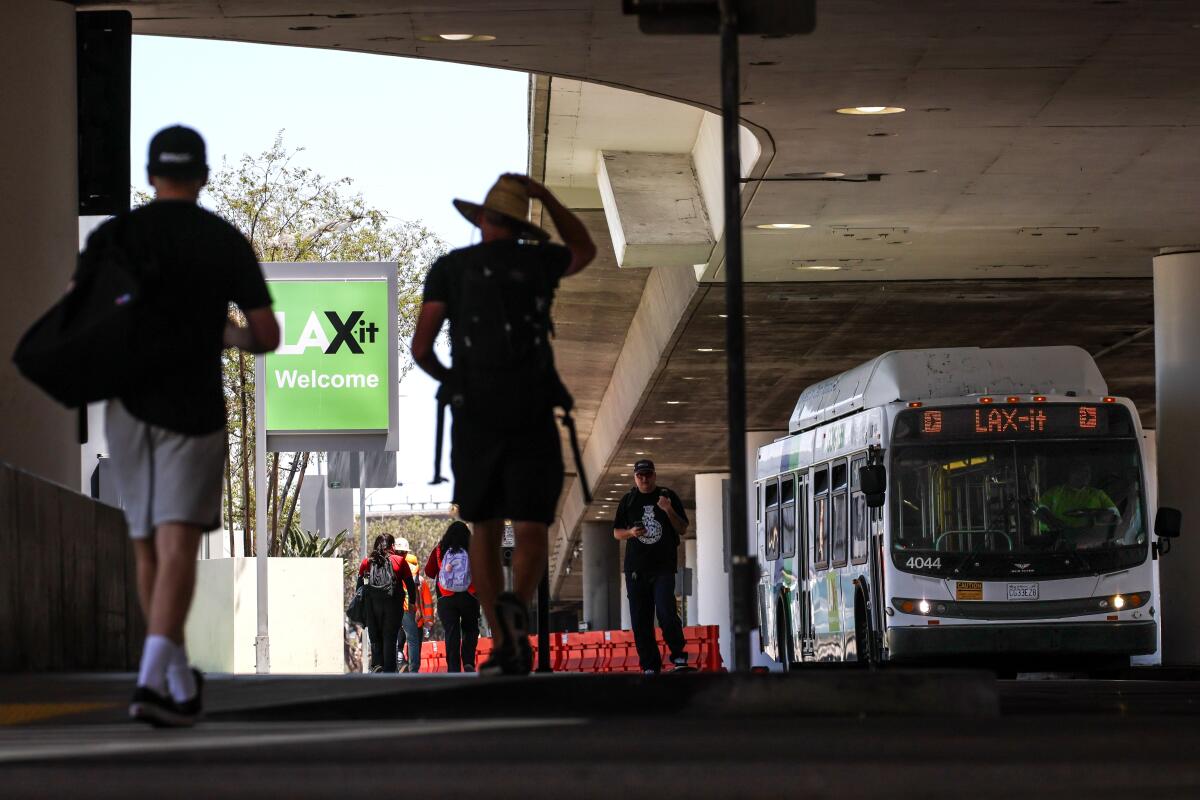
“It’s so, so, so much worse than it was,” said Little, who has lived in Los Angeles since 1965.
Little believes that some of the changes at the airport in recent years, including the establishment of the LAX-it lot and designated inner and outer lanes for specific types of ground transportation vehicles, have made it more difficult — not less — to get around 1 World Way.
“Arriving at LAX is an embarrassment to the city, in my opinion,” she said.
“And I love our city.”
More to Read
Sign up for This Evening's Big Stories
Catch up on the day with the 7 biggest L.A. Times stories in your inbox every weekday evening.
You may occasionally receive promotional content from the Los Angeles Times.
